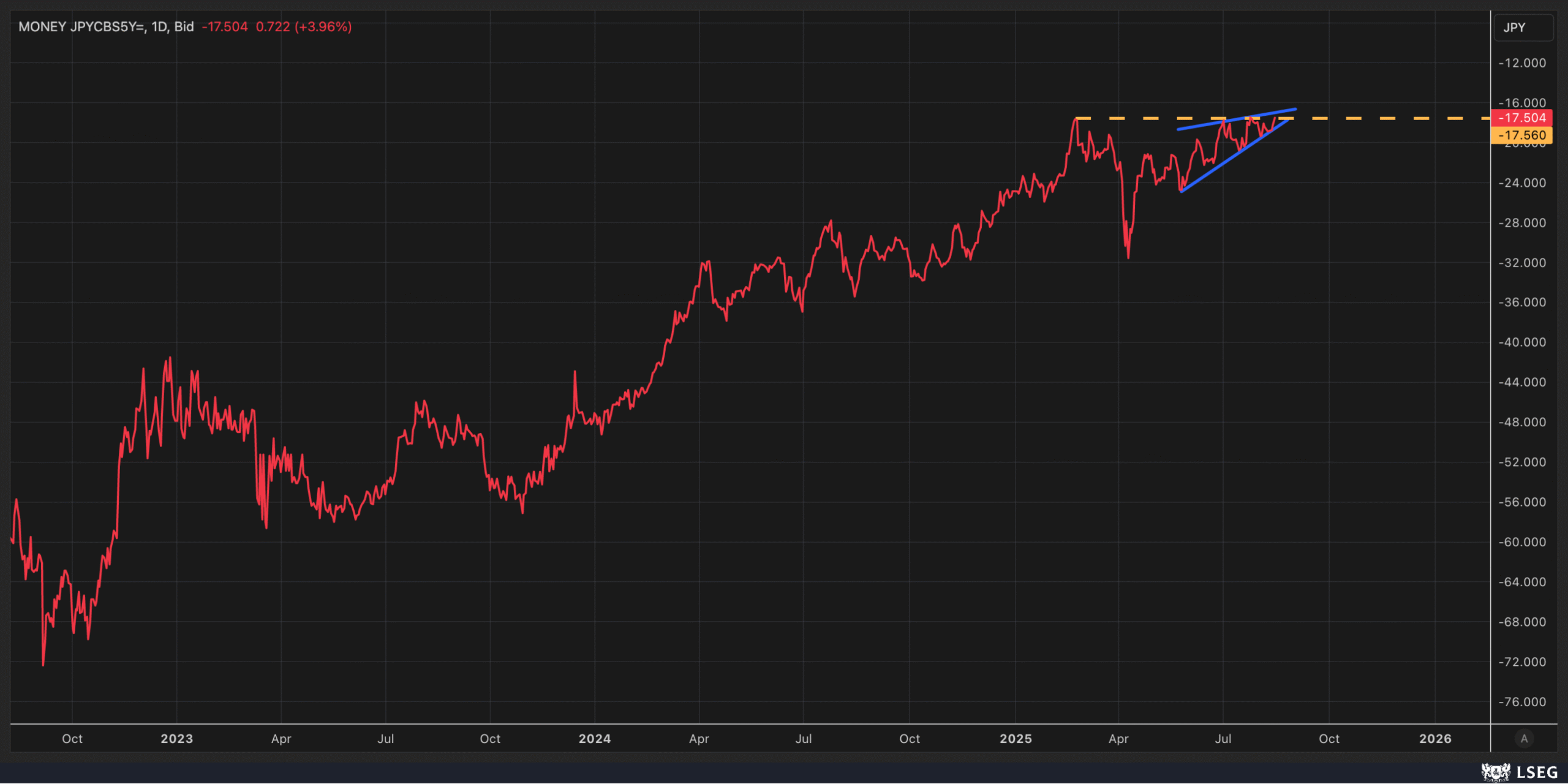S&P 500 falls as ongoing government shutdown, trade jitters weigh
Stocks finished Thursday flat, but it’s hard to gauge how much today’s OPEX influenced the S&P 500. The big gamma level appears to be around 6,450, which has been the lower end of the recent trading range. Yesterday’s price action in the S&P 500 was not impressive, with very little to discuss.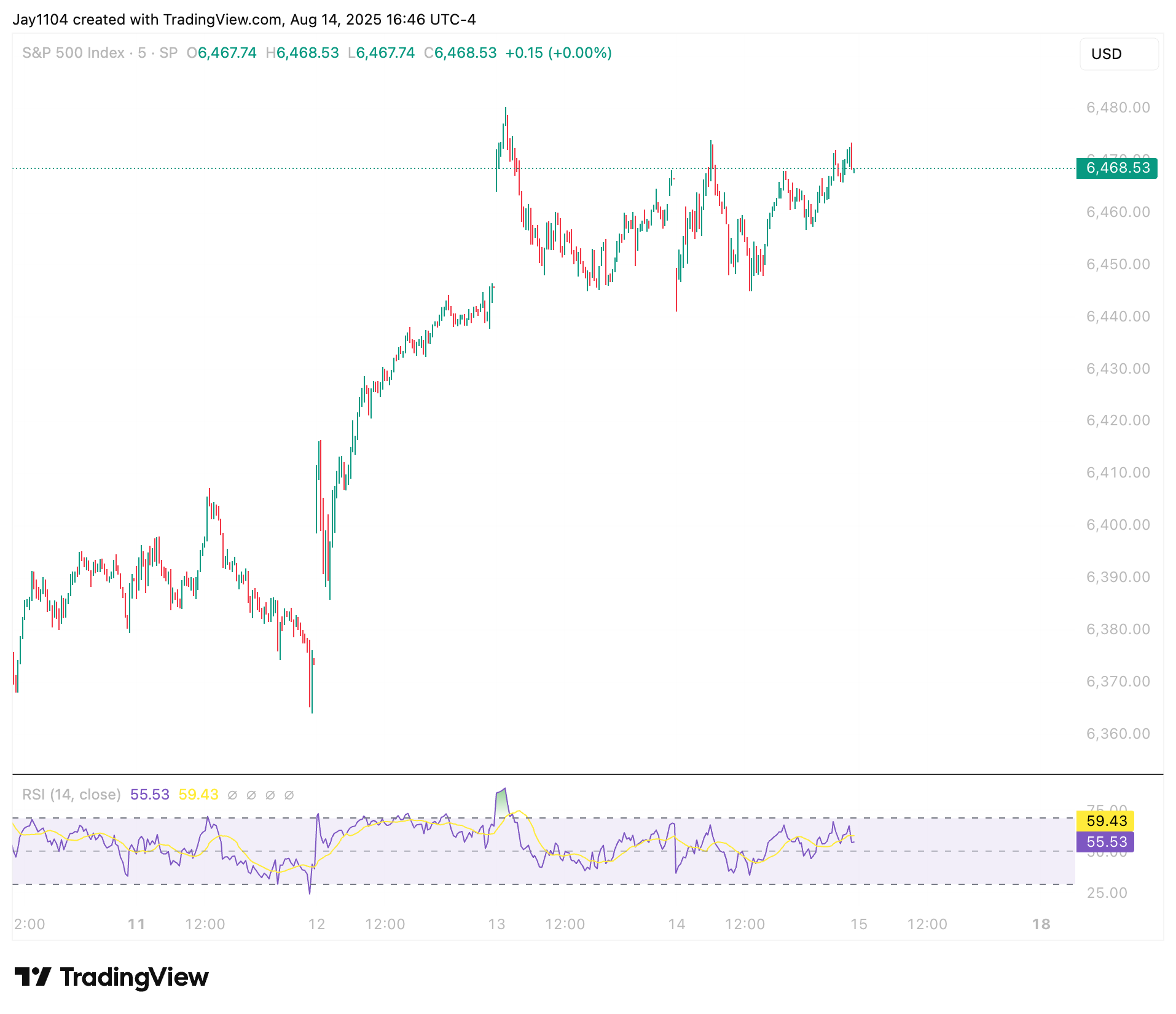
It was somewhat surprising to see the index rise at all, given that both the VIX and 1-month implied correlation indices increased. Correlations and volatility still point to the S&P 500 forming some kind of top. While the jobs report breakdown sparked the move, it happened too quickly. Interestingly, we saw a similar false start in 2024 — though this one was admittedly a bit larger.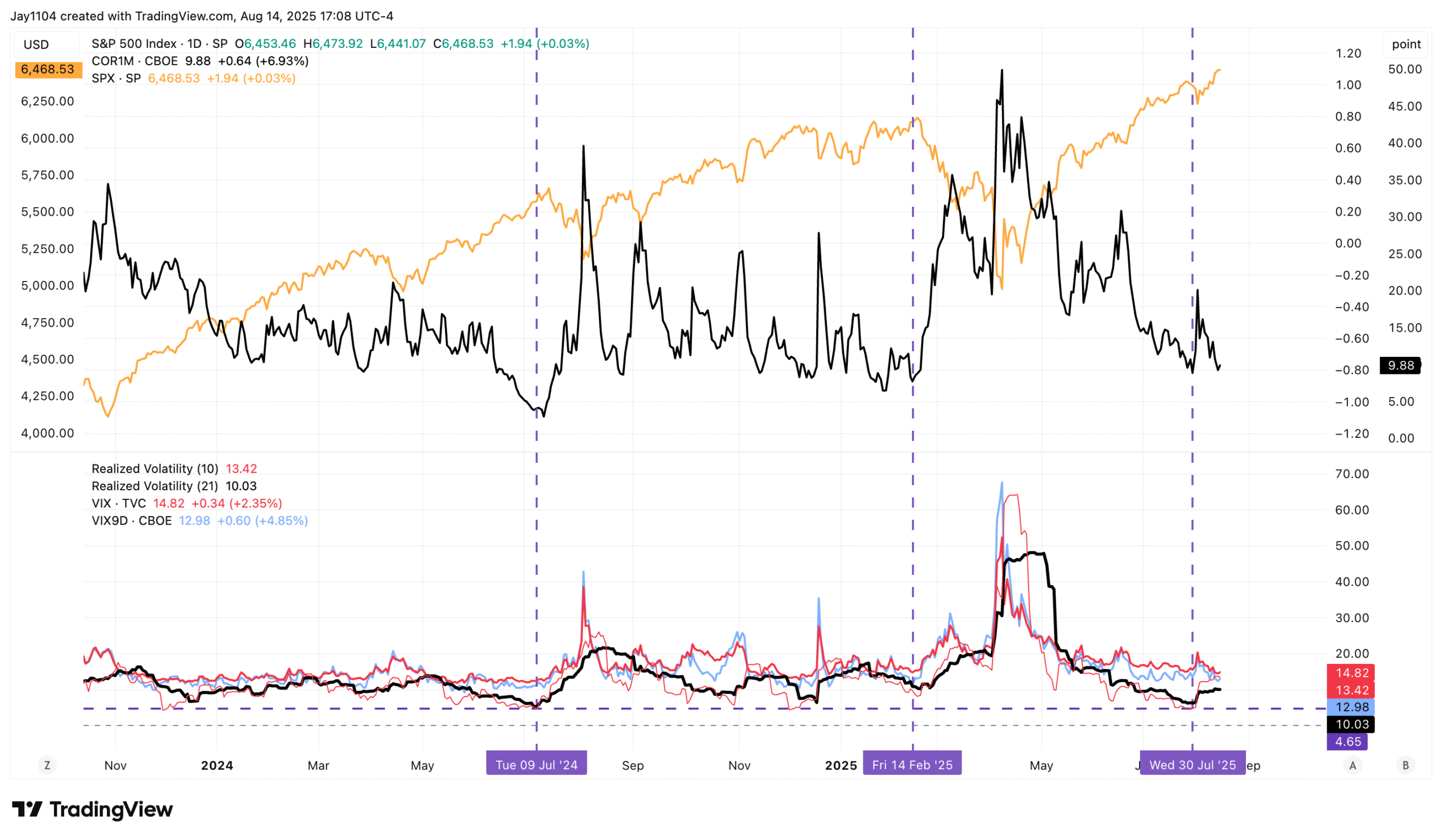
The Reverse Repo Facility closed at $28 billion, and today’s cash settlement is likely to push it even lower. As I’ve noted, excess liquidity is gone from the market, and the reverse repo drain is the final nail in the liquidity coffin.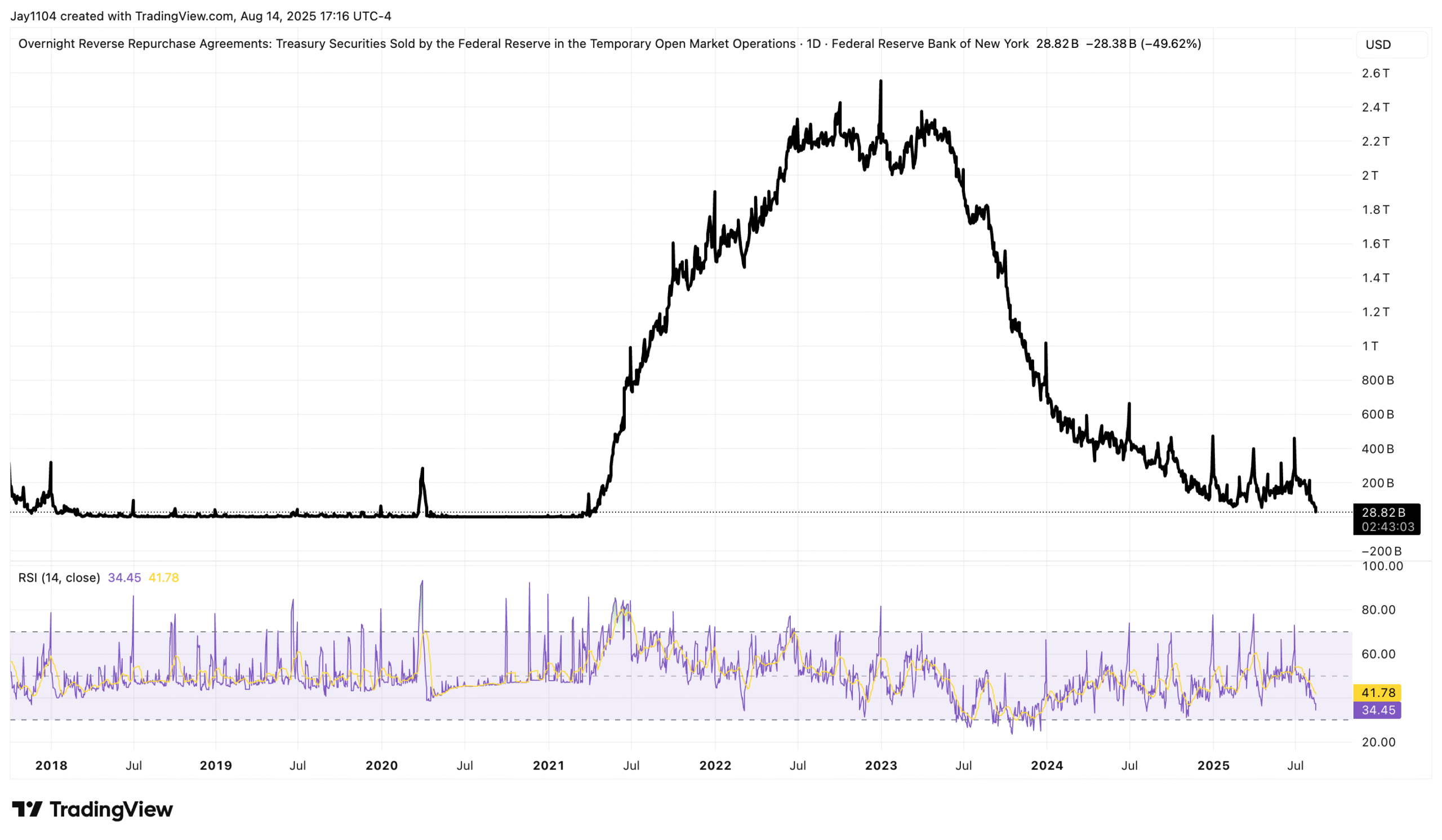
Things are starting to get interesting again in the Japanese bond market, with 10-year yields once more testing resistance at 1.58%. With U.S. rates moving higher, there’s a good chance Japanese yields will follow.
The 30-year JGB also appears to be nearing a breakout, with yields compressing in what looks like a bull pennant formation.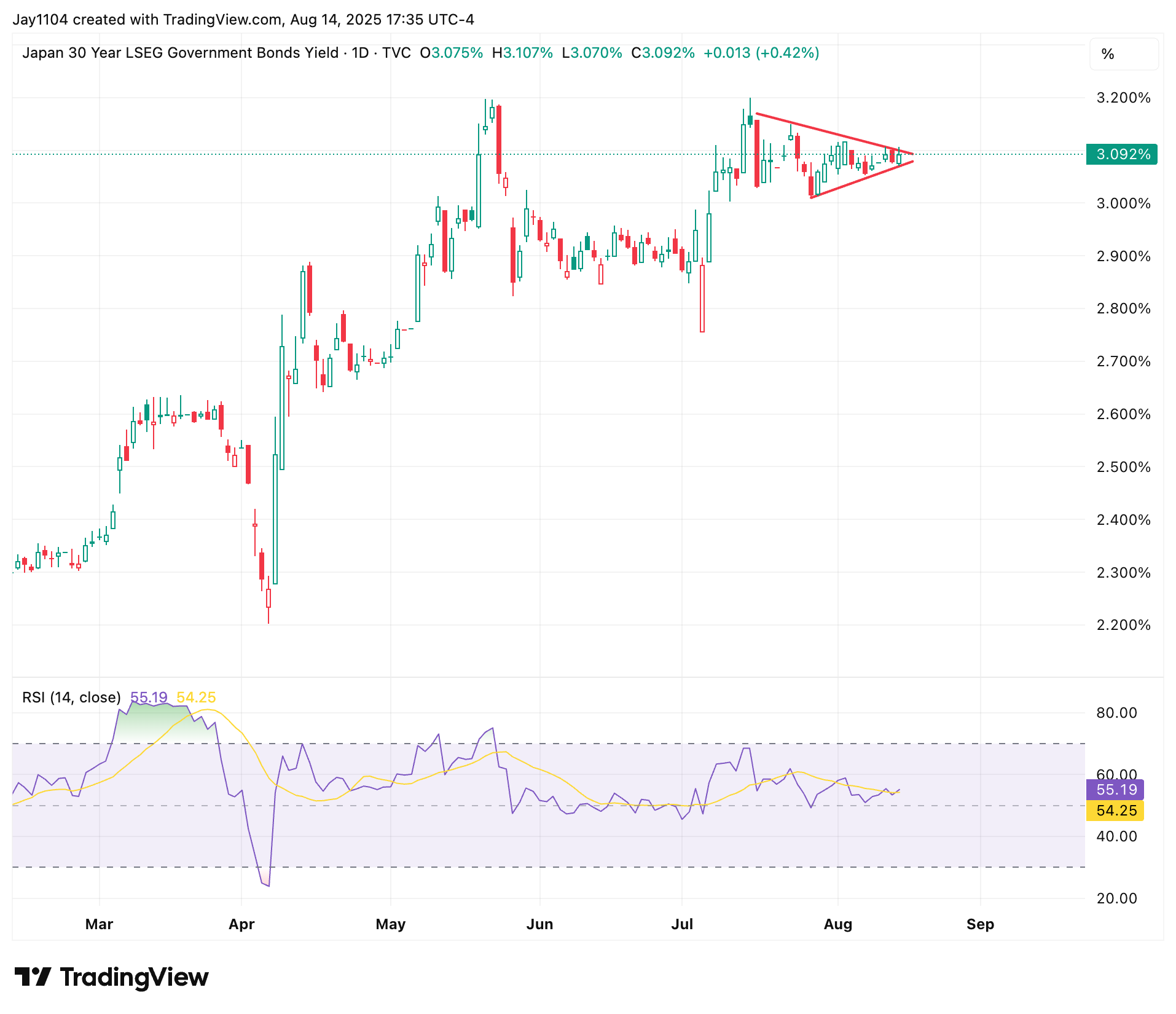
We care about JGBs because of their spread with U.S. Treasuries and the implications for USD/JPY. If that spread finally breaks support, USD/JPY will be forced to strengthen against the dollar.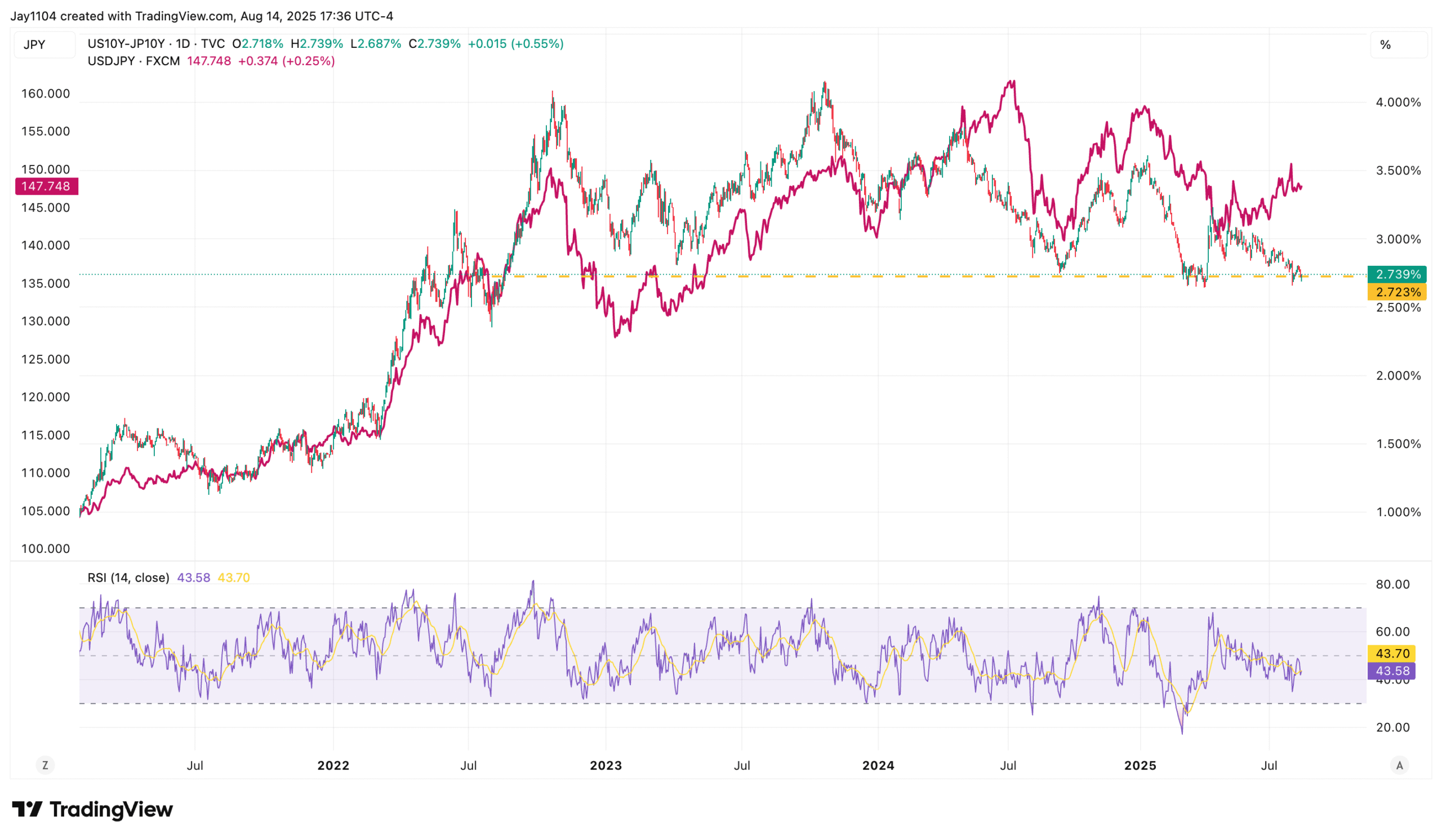
The general question that follows this chart from readers is: what does it mean for the yen carry trade? The honest answer is, I don’t know. Many outcomes are possible, and since last summer, USD/JPY hasn’t tracked the index quite the same way. The issue is that the JPY 5-year cross-currency basis swap also suggests something big may be brewing.
If this XCCY breaks out decisively to the upside, it would likely be due to Treasury–JGB spreads narrowing and USD/JPY starting to fall. That would be the clearest sign yet of a yen carry trade unwind, as demand to convert dollars into yen increases and the cost of doing so becomes more expensive.